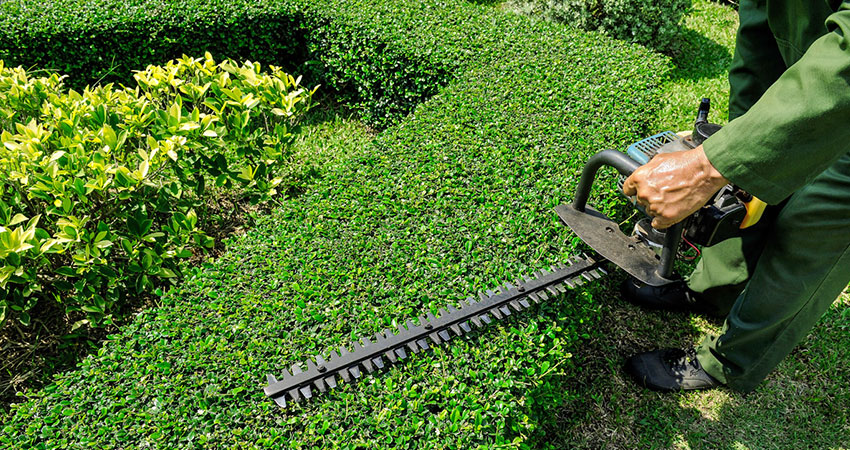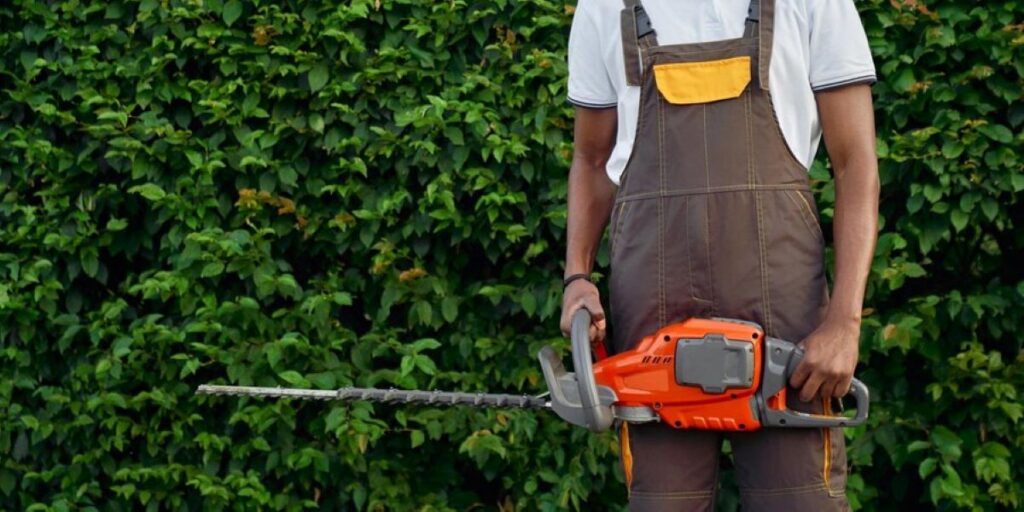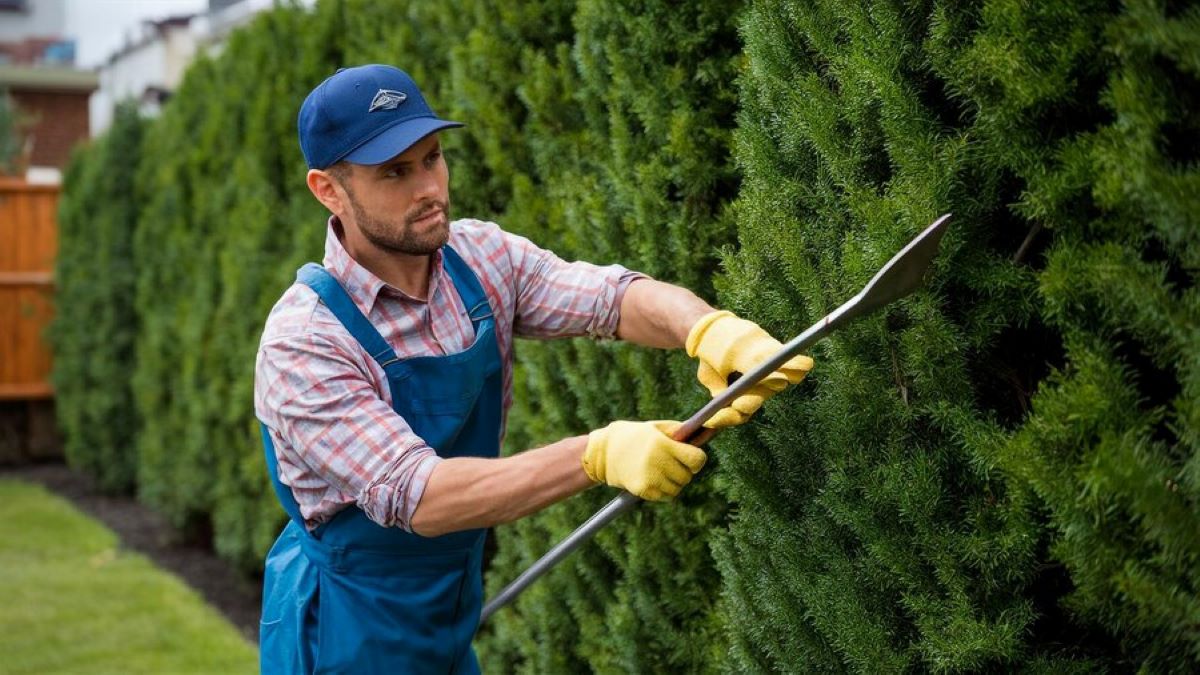What Is Hedge Trimming and Why Is It Important?
Hedge trimming is the practice of cutting back overgrown branches and foliage to maintain a hedge’s shape, size, and vitality. This essential aspect of hedge maintenance directly impacts plant health by stimulating robust development and preventing disease.
Regular cutting encourages your hedges to produce denser foliage from the base upwards. When you remove the tips of branches, the plant responds by generating multiple new shoots, creating that lush, full appearance characteristic of well-maintained hedges. Engaging a professional Hedge Trimming Service ensures this process is done correctly, promoting healthy, even growth while preventing long-term structural issues.
A properly maintained hedge transforms your garden’s appearance. Beyond aesthetics, consistent trimming ensures adequate light penetration and air circulation throughout the plant structure, reducing the risk of fungal infections and pest infestations.
This article explores the optimal frequency for healthy hedge growth, examining how different varieties respond to seasonal trimming schedules. Understanding when and how often to trim — or when to call a Hedge Trimming Service for expert maintenance — will help you achieve thriving hedges that enhance your outdoor space year-round.
How Often Should You Trim Your Hedges for Optimal Health?
Most hedges thrive with biannual hedge trimming—cutting twice yearly provides the ideal balance between controlling growth and maintaining plant health. This hedge trimming frequency works well for the majority of garden hedges, though specific varieties may need slight adjustments.
Evergreen Hedges
Evergreen hedges grow rapidly throughout the growing season and benefit from two strategic cuts. The first trim in late spring manages the initial growth burst, whilst a second cut in autumn tidies up summer growth before winter dormancy. Without this regular attention, evergreens quickly become leggy and sparse at their base.
Deciduous Varieties
Deciduous varieties follow a different growth pattern with two distinct spurts—a vigorous spring flush followed by a smaller summer push. Timing your cuts to coincide with these natural cycles maximises results. The spring trim after the first growth period shapes the hedge, whilst the autumn cut prepares it for winter.
Aligning your trimming schedule with each hedge type’s natural rhythm proves more effective than arbitrary cutting dates. Fast-growing species like privet or laurel may occasionally require an additional mid-summer trim if growth becomes excessive. Slower-growing varieties such as yew can sometimes manage with annual maintenance, though twice-yearly attention still produces superior density and form.
When Is the Best Time to Trim Hedges?
The best time to trim hedges is during autumn and late spring, when temperatures are moderate and conditions are ideal for quick healing of cut branches. These seasons provide the perfect balance—neither too hot nor too wet—allowing your hedges to recover swiftly without any stress.
The Benefits of Trimming Hedges in Autumn
Autumn hedge care offers strategic advantages for the long-term health of your plants. Trimming during this season removes unwanted buds before they fully develop, preventing the hedge from wasting valuable energy on growth that would only be cut away later. The plant redirects this conserved energy into strengthening its root system and preparing for winter dormancy, resulting in more vigorous growth when spring arrives.
The Importance of Pruning Hedges in Spring
Spring hedge pruning serves a different but equally important purpose. Cutting hedges in late spring—after the initial growth spurt but before summer heat intensifies—controls the first flush of new foliage. This timing creates a neat, well-defined shape that persists throughout the summer months, reducing the need for additional maintenance during the hottest part of the year.
Why Mild Weather Matters
The mild weather during both seasons minimises shock to the plant while encouraging faster callusing of wounds. Fresh cuts seal more efficiently when temperatures hover in the comfortable middle range, protecting hedges from opportunistic diseases and environmental stress.
What Are the Risks of Trimming at the Wrong Time?
Trimming hedges during hot summer months or humid weather exposes fresh cuts to significant stress and disease. High temperatures cause rapid moisture loss from newly trimmed branches, leading to scorched foliage and weakened plant tissue that struggles to recover.
Dangers of Summer Pruning
Summer pruning dangers become particularly acute when combined with humidity. Warm, damp conditions create the perfect environment for fungal spores to colonise open wounds on your hedge. These fungal infections on hedges can spread rapidly through the plant, causing discolouration, dieback, and structural damage that may take years to reverse.
Challenges of Wet Weather
Wet weather presents its own set of challenges for hedge maintenance. Rain-soaked branches don’t heal properly after cutting because excess moisture prevents the natural sealing process that protects against pathogens. Water sitting on fresh cuts acts as a gateway for bacterial infections and rot.
Consequences of Improper Hedge Trimming
The consequences of improper hedge trimming risks extend beyond immediate visible damage:
- Weakening branches become susceptible to pest infestations
- Stressed plants divert energy to survival rather than healthy growth
- Open wounds during vulnerable periods compromise the hedge’s natural defence systems
- Recovery time increases significantly, delaying the achievement of desired shape and density
Professional hedge trimming services understand these seasonal vulnerabilities and schedule maintenance to avoid these critical risk periods, protecting your investment in garden landscaping. Read more about gardening safety.

How Should You Properly Prune Your Hedges?
Correct hedge pruning technique starts with creating the right shape—hedges should be narrower at the top than at the bottom. This tapered profile allows sunlight to reach lower branches, preventing the base from becoming sparse and woody. A hedge that’s wider at the top casts shadows on its own lower sections, starving interior growth of essential light.
Shaping hedges for sunlight exposure
Requires stepping back frequently during trimming to assess the overall form. Use hand shears or powered trimmers at a slight angle, working from bottom to top. The ideal taper creates approximately a 10-15 degree slope from base to crown, ensuring every part of the hedge receives adequate light throughout the day.
Major structural cuts should wait until late winter when deciduous hedges enter their dormant phase. During this period, plants conserve energy and tolerate significant pruning without stress. Removing thick branches or reshaping overgrown sections becomes safer for the plant’s long-term health.
Avoid removing more than one-third of the hedge’s total growth in a single session. Excessive cutting shocks the plant, potentially causing:
- Delayed spring growth
- Increased vulnerability to pests
- Permanent structural damage
- Die-back in older wood
Light, regular maintenance proves more effective than aggressive annual pruning. Each trim should refine the shape whilst maintaining the hedge’s natural vigour and density. Check out more about Hedge Shaping: What Tools and Techniques Do Professionals Use?
What Safety Precautions Should Be Taken When Trimming Hedges?
When trimming hedges, it’s important to prioritise safety. This involves being mindful of personal protection and ensuring that your equipment is stable. Without taking the necessary precautions, you could be at risk of injury from sharp tools and thorny branches.
Protective Gear for Pruning
To protect yourself while pruning, make sure to wear the following:
- Heavy-duty gloves: These will shield your hands from cuts, scratches, and blisters.
- Safety eyewear: This will prevent debris and small branches from entering your eyes.
- Sturdy, closed-toe footwear: Opt for shoes with a good grip to maintain stable footing.
- Long sleeves and trousers: These will protect your skin from thorns and sharp edges.
- Face masks: Wear these when trimming dusty or allergen-producing plants.
Additional Hazards of Tall Hedges
If you’re working on tall hedges, there are some extra dangers you need to be aware of:
- Ladders must be positioned on level ground with secure footing before climbing.
- Never overreach whilst on a ladder—reposition it frequently to maintain balance and control.
- Always keep three points of contact (two feet and one hand, or two hands and one foot) on the ladder.
Risks of Working at Height
When you’re working at height, there’s an increased risk of serious falls and accidents involving tools. Here are some specific considerations:
- Electric hedge trimmers require particular care when used above ground level, as trailing cables can cause trips or entanglement.
- Battery-powered tools offer greater manoeuvrability but still demand steady handling.
Professional Help for Tall Hedges
If you have tall hedges that need trimming, it may be worth considering professional hedge trimming services. They have specialised equipment like scaffolding towers and harness systems that provide safer access to these areas compared to standard ladders.
Do Different Hedge Types Require Different Trimming Schedules?
Most hedges thrive on a biannual trimming schedule, but certain varieties require adjusted timing based on their unique characteristics. Understanding specific hedge pruning times helps achieve better results without compromising plant health.
Lilly Pilly hedges benefit from trimming after their flowering period ends, typically in late spring or early autumn. This timing preserves their attractive berries whilst controlling growth. Photinia varieties, known for their vibrant red new growth, respond best to pruning in late spring after the colourful flush matures, allowing you to enjoy their ornamental display.
Boxwood tolerates more frequent light trims throughout the growing season, whilst Viburnum hedges should be pruned immediately after flowering to avoid removing next year’s buds. Murraya hedges can be trimmed year-round in mild climates, though late spring and autumn remain optimal.
These variations enhance aesthetic outcomes, yet they don’t replace the fundamental need for regular maintenance. Adapting your trimming schedule to match each variety’s natural rhythm ensures healthier, more attractive hedges throughout the year.
How Can Hiring a Professional Hedge Trimming Service Benefit You?
What advantages do professional hedge trimmers bring to your garden? Experienced specialists understand the precise timing requirements for different hedge species, ensuring cuts are made when plants can heal most effectively and redirect energy towards robust growth.

The Advantages of Professional Hedge Trimmers
Professional hedge trimmers advantages extend beyond basic knowledge:
- Species-specific expertise – Professionals recognise subtle differences between varieties like Photinia and Boxwood, adjusting their approach to match each plant’s flowering cycle and growth pattern
- Proper equipment – Commercial-grade tools deliver cleaner cuts that heal faster, reducing infection risks
- Safety management – Trained operators handle tall hedges and awkward angles without compromising personal safety or plant health
- Consistent results – Regular professional maintenance creates uniform shapes that enhance kerb appeal whilst promoting interior foliage development
The investment in professional services eliminates guesswork about when and how to trim, protecting your hedges from damage caused by incorrect timing or technique.
Conclusion
Hedge Trimming Service: How Often Should You Trim for Healthy Growth? The answer lies in consistent biannual maintenance aligned with your hedge’s natural growth patterns. Trimming twice yearly—during autumn and late spring—creates the foundation for vibrant, dense foliage that enhances your garden’s appeal.
Implementing these healthy hedge tips summary principles transforms your outdoor space. Regular maintenance prevents overgrowth, reduces pest problems, and maintains structural integrity. The investment of time and effort pays dividends through lush, well-shaped hedges that frame your property beautifully.
Scheduling appointments with trusted professionals ensures expert care tailored to your specific hedge varieties. Specialists bring precision, proper equipment, and safety protocols that protect both your plants and property. Their knowledge of species-specific requirements guarantees optimal results season after season.
Your garden’s health depends on consistent care. Whether you handle maintenance yourself or partner with experienced professionals, regular trimming creates an ecosystem that thrives aesthetically and ecologically for years to come.
Hedge Trimming FAQs
Hedge trimming involves cutting back overgrown branches to maintain shape, health, and density. Proper trimming encourages lush growth, prevents disease, and ensures your hedges remain attractive and structurally sound.
2. How often should hedges be trimmed?
Most hedges thrive with biannual trimming—late spring and autumn. Evergreen hedges may need two trims per year, while slower-growing varieties like yew may require less frequent maintenance. Fast-growing species sometimes need an extra mid-season cut.
3. When is the best time to trim hedges?
The optimal periods are late spring and autumn. Mild weather during these seasons allows cuts to heal quickly, reduces plant stress, and prevents fungal or bacterial infections. Avoid trimming in hot, humid, or wet conditions.
4. Why is correct pruning technique important?
Hedges should be narrower at the top than the base (tapered) to allow sunlight and air circulation throughout. Avoid removing more than one-third of growth at once, and focus on gradual shaping to maintain plant health.
5. What safety precautions are necessary when trimming?
Use heavy-duty gloves, safety eyewear, long sleeves, closed-toe shoes, and face masks when needed. For tall hedges, ensure ladder stability and consider professional help with scaffolding or harness systems.
6. Do different hedge types require different trimming schedules?
Yes. For example, Lilly Pilly hedges are best trimmed after flowering, Photinia after new red growth matures, Boxwood may receive frequent light trims, and Murraya can be trimmed year-round in mild climates.
7. What are the benefits of hiring professional hedge trimming services?
Professionals provide species-specific care, proper tools for clean cuts, safe handling of tall or awkward hedges, and consistent results that encourage dense, healthy foliage. They also prevent mistakes that can cause long-term damage.
8. What are the risks of trimming at the wrong time?
Trimming during hot, humid, or wet conditions can lead to scorched foliage, fungal infections, bacterial rot, and delayed recovery. Incorrect timing may also weaken branches and increase pest susceptibility.
9. How does proper trimming improve hedge health?
Regular trimming promotes dense growth from base to top, ensures sunlight penetration and airflow, reduces disease risk, and maintains structural integrity for long-lasting, visually appealing hedges.

